Fix Pool Pump Air Issues: Simple Solutions for Smooth Operation
March 31th, 2024
March 31th, 2024
Standing beside a pool on a lazy afternoon, one might revel in the tranquil beauty of shimmering water. However, when that serenity is unexpectedly broken by the sputtering sound of a malfunctioning pool pump, the mood quickly shifts. The culprit? Often, it's just trapped air. This nuisance, if left unchecked, can lead to inefficiencies or even damage to the pump. But fear not—addressing air in a pool pump is a challenge met by many, and solutions are well within reach.
Years ago, a friend's pool suffered from the same issue. We spent hours speculating over the cause before understanding the simple mechanics involved. At its core, a pool pump is designed to maintain a closed system, where water circulates smoothly. When air sneaks in, usually through a tiny leak or a poorly sealed connection, it disrupts this flow, causing the pump to lose prime and function erratically.
Recognizing the symptoms is half the battle. It might start with strange noises, reduced water flow, or even bubbles in your pool. For many pool owners, tackling this problem can seem daunting, yet it's often a straightforward process once broken down into clear steps. By understanding common entry points for air and employing some basic troubleshooting techniques, anyone can restore their pool pump's performance with confidence. Join us as we explore practical solutions to banish unwanted air from your pool pump system.
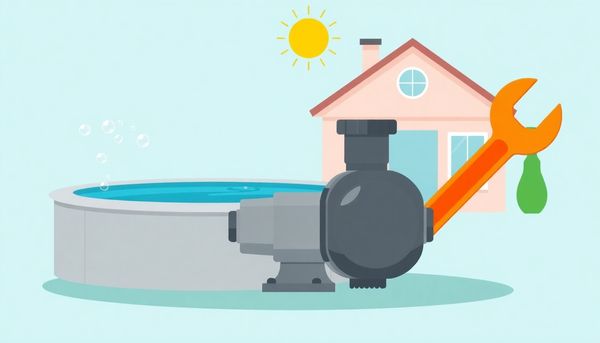
Air leaks in a pool pump can sneak up on you, often unnoticed until those pesky bubbles appear in your otherwise pristine pool. Addressing these air invaders quickly prevents long-term damage to your pump and maintains your pool's efficiency.
Start by examining the water level. The pool water should ideally be at the midpoint of the skimmer. If it's too low, the skimmer might suck in air instead of water. A simple garden hose can resolve this by topping up your pool, ensuring the skimmer functions correctly without gulping air.
Next, scrutinize the skimmer basket and weir. A cracked basket or a jammed weir door can disrupt water flow, allowing air to infiltrate. Replacing a damaged basket or ensuring the weir moves freely can often solve the issue right away.
Moving on to the pump itself, the pump lid O-ring is a common culprit. Carefully remove the lid and inspect the O-ring for any signs of wear or cracks. Applying a Teflon-based lubricant to a healthy O-ring can improve its seal and prolong its life. If the O-ring is compromised, replace it immediately.
Don't overlook the drain plugs on the pump housing. These should be tight and free of leaks. A simple application of plumber’s tape can seal any minor leaks, stopping air from sneaking in through the threads.
Lastly, for those with inground pools, examine any unions in the plumbing. Ensure their O-rings are intact and properly seated, as a misaligned O-ring can be a hidden source of air leaks.
Knowing these steps helps you stop air leaks fast, keeping your pool clear and inviting without the mystery of unwanted bubbles.
Air bubbles in your pool can be as annoying as they are mysterious. But focus your detective skills on the skimmer, the gateway where water enters your pool’s filtration system, and you might solve this riddle. A skimmer's job is straightforward: pull water, not air. So, when you see those playful bubbles, it's a sign something's amiss.
Start by checking the water level. If it doesn't reach the midpoint of the skimmer’s opening, the skimmer might inadvertently be drawing in air. By simply topping off your pool, you may preemptively strike out this common issue. Next, inspect the skimmer baskets for any cracks or misalignments. A compromised basket can disrupt the suction, allowing air to sneak in. Make sure it sits snugly in its housing, leaving no room for air to join the party.
Then, take a look at the weir—the flap that manages water flow. A jammed or sticky weir can hinder water intake, creating opportunities for air to invade the pump system. Ensure it swings freely, and if your skimmer lacks a weir, consider installing one to improve the system's efficiency.
By zeroing in on these potential trouble spots, you can often resolve air issues before they escalate. With a little care, your pool will remain a bubble-free zone, letting you enjoy your swim without interruptions.
When confronting air issues within your pool pump, one of the most crucial steps is inspecting its components. Each part plays a role in ensuring your pool runs smoothly, and neglecting this can lead to those frustrating bubbles. Begin by focusing on the skimmer, a primary entry point for unwanted air. Ensure the skimmer baskets are intact and positioned correctly—damaged or misaligned baskets can easily disrupt water flow and introduce air into the system.
Next, examine the weir, the small flap that regulates water flow. A jammed or malfunctioning weir can lead to air being sucked into the system. If your skimmer lacks a weir, consider installing one as an additional safeguard. An often overlooked element in this puzzle is the pump lid’s O-ring. Turn off the pump, remove the lid, and scrutinize the O-ring for any signs of wear or cracking. A compromised O-ring should be replaced immediately to maintain a tight seal. It’s also wise to apply a Teflon-based lubricant to keep it supple and effective.
Lastly, check the pump’s drain plugs. Loose or leaking plugs can be remedied with plumber's tape to ensure a tighter fit. Remember, even if everything appears intact, priming the pump post-maintenance is crucial for restoring optimal function. Paying attention to these details can save you from poolside frustration and keep your water crystal clear.
Securing the drain plugs on your pool pump isn't just a minor detail—it's a crucial step in preventing air leaks and maintaining the health of your system. Picture a bustling kitchen with a leaky faucet. Each drip represents a tiny, yet significant, oversight. Similarly, an improperly sealed drain plug on your pool pump can allow air to seep in, disrupting the flow and efficiency of your system.
My neighbor once faced a puzzling issue with her pool. Despite checking the obvious culprits like the skimmer and O-rings, air bubbles stubbornly persisted. The problem? A loose drain plug. After applying some plumber’s tape to the threads, she secured the plug and noticed an immediate improvement. It was as if the pool finally exhaled a sigh of relief, the water flowing smoothly once more.
When addressing your pool's air troubles, focus on those drain plugs. Unscrew them and, using pipe thread sealant tape, wind a few layers around the threads. This simple act reinforces the seal and blocks any air from sneaking in. Once tightened, conduct a quick test by running the pump and observing the return jets. With secure drain plugs, the water should return steadily, bubble-free.
Remember, keeping every component tightly sealed not only ensures your pool remains bubble-free but also extends the life of your equipment. So, keep those plugs snug and enjoy a pristine pool experience.
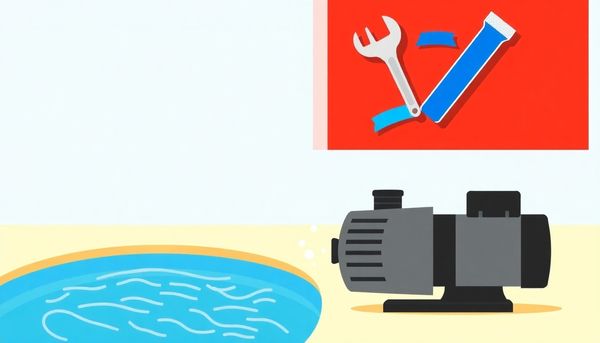
Air bubbles in pool return jets can turn a relaxing swim into a puzzling mystery. To unravel this enigma, the first step is often to investigate the suction side of the pool system. A friend once shared how a simple check of the water level in his pool solved a bubbling issue. If the water level dips below the middle of the skimmer opening, the skimmer can inadvertently pull in air. Ensuring the water level is correct might just be the simplest fix.
Skimmer maintenance plays a crucial role too. Inspect the skimmer baskets for any signs of wear or improper seating. A misaligned or damaged basket can disrupt the water flow, introducing air. Additionally, the weir, that little flap inside the skimmer, should swing effortlessly. If it’s stuck, it can disrupt the flow and cause aeration.
When these elements are in order, turn your attention to the pump itself. I recall the time I discovered a cracked O-ring in my own pump lid, a sneaky culprit of air leaks. The O-ring should be flexible and intact. Even if it appears fine, lubricate it with a Teflon-based spray to enhance its seal.
Drain plugs on the pump housing need attention as well. Tighten them securely, and use plumber’s tape for a foolproof seal. If unions are part of your pool’s plumbing, check their O-rings too. A properly seated and undamaged O-ring is essential for preventing air leaks. With these steps, you can ensure a smooth, bubble-free swimming experience.
Spotting air bubbles in your pool can be a sign that something's amiss. While not catastrophic, addressing this issue can save you from bigger headaches down the line. The first step is identifying where that air leak is sneaking in.
Start by examining the skimmer. This humble component often plays a critical role in airflow issues. Ensure the water level in your pool sits comfortably in the middle of the skimmer's opening. Too low, and the skimmer might start gulping air instead of water. Next, check the skimmer baskets. These should be damage-free and snugly seated to prevent any unwanted air intrusion. You might also want to give the weir—a small but mighty flap—a once-over to ensure it's functioning smoothly and not obstructed.
Moving on, the pump lid's O-ring is another common culprit. With the pump switched off, remove the lid and inspect the O-ring for any signs of wear or cracking. A damaged O-ring is a surefire way for air to infiltrate your pump system. Even if it looks intact, a spray of Teflon-based lubricant can enhance the seal, keeping air at bay while extending the life of the O-ring.
Finally, examine the drain plugs in the pump housing. Ensure they’re snug and not leaking. Applying a bit of plumber’s tape can tighten the seal. Remember, each connection point in your pool's plumbing is a potential entryway for air, so give them all a careful look-over. With these steps, you’ll be well on your way to restoring your pool's bubble-free bliss.
Inspecting and replacing O-rings in your pool pump might seem like a minor task, but it’s crucial for maintaining efficient operation. Picture the O-ring as the unsung hero of your pump’s seal—a small piece of rubber standing guard against air intrusion. Over time, these little defenders can wear down, leading to the pesky bubbles escaping from your jets.
First, switch off your pump to avoid any unexpected splashes or mishaps. Carefully remove the pump lid and inspect the O-ring nestled beneath. Bend it gently to examine for any telltale cracks or signs of dry rot. If it’s damaged, it’s time for a replacement—a relatively simple task that could save you from more significant issues down the line. When replacing, opt for O-rings made from durable materials resistant to chlorine and UV damage.
Keep in mind, even if the O-ring looks intact, a bit of preventive maintenance never hurts. Apply a liberal coating of Teflon-based lubricant before reseating it. This not only ensures a tighter seal but also extends the lifespan of the O-ring by reducing friction and preventing drying.
Don’t forget the often-overlooked unions within your plumbing system if you have an in-ground pool. They, too, harbor O-rings that need checking. Ensuring all these components are in top shape can significantly reduce the chances of air sneaking into your system, keeping your pool pump running smoothly and your water bubble-free.
A pool pump's adversary often lurks in plain sight: those sneaky air bubbles. These bubbles signal that air is slipping into the system, a silent infiltrator that requires swift attention. To tackle this, securing and sealing connections can be your best allies in restoring tranquility to your pool.
First and foremost, closely examine the pump lid and its O-ring. This rubber ring is vital for creating a secure seal. If it's brittle or showing signs of wear, replace it immediately. A little dab of Teflon-based lubricant on a healthy O-ring ensures a snug fit, reducing the chances of air sneaking in through the lid. It's akin to ensuring your winter coat is buttoned up snugly against the chill.
Next, turn your attention to the skimmer system. A malfunctioning skimmer can become an unexpected air conduit. Confirm that the skimmer baskets are intact and properly seated. Without this simple step, even a small crack can become a passageway for air.
Drain plugs at the pump's base shouldn’t be overlooked either. Loose or leaking plugs are notorious culprits for air infiltration. Wrapping the threads with plumber’s tape can help seal them tightly, blocking unwanted air entry.
Finally, inspect any unions within the plumbing. These connectors often house their own O-rings, which must be intact and correctly positioned. A misplaced O-ring in this context can be as frustrating as a stone in your shoe, leading to air entering the system.
By addressing these potential vulnerabilities, you can exorcise those pesky bubbles and ensure your pool’s heart—the pump—beats smoothly and efficiently.
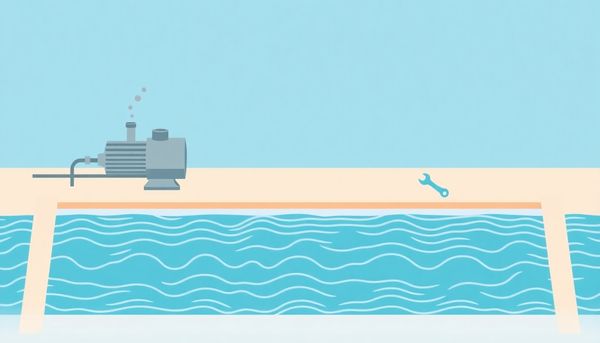
In the world of pool maintenance, a skimmer's seal can be an unsung hero. When functioning optimally, it aids in maintaining the perfect balance between water flow and debris filtration. Yet, if neglected, it could be the sneaky culprit behind those pesky air bubbles disrupting your pool’s serenity. Ever noticed your pool's water level sitting below the midline of the skimmer's opening? That could be part of the problem. Skimmers thrive when water levels are just right; otherwise, they might gulp in air instead of water.
Having tackled this issue myself, I've learned to appreciate the nuances of a skimmer's role. It's not just about preventing leaves from clogging the system. The skimmer’s weir, a small flap that might seem insignificant, plays a pivotal part in preventing air from entering. It’s essential to check that it swings freely, as a jammed weir can be a silent invitation for air to join the party. If your skimmer lacks this feature, consider installing one—it’s a small investment for peace of mind.
Moreover, ensure the skimmer basket is intact and properly seated. A cracked or misaligned basket might seem trivial but can significantly disrupt the balance, allowing air to slip through. By paying closer attention to these details, you create a more efficient suction environment, reducing the chances of air bubbles making a splashy appearance. So next time you lounge by your pool, let the skimmer do its job while you enjoy the clear, bubble-free water.
Tracing the path of air sneaking into your pool pump can feel like solving a mystery. The first clue often hides in the skimmer, that ever-so-important gateway for water entering the filtration system. Upon inspection, ensure the water level sits comfortably in the mid-range of the skimmer's opening. If it dips too low, the skimmer guzzles air alongside water, creating those pesky bubbles. Sometimes, a damaged or improperly seated skimmer basket is the culprit, hampering smooth water flow. Also, check the weir—the skimmer's flap—making sure it swings freely, as it's essential for regulating water intake.
As you dig deeper, your next suspect might be the pool pump itself. When examining the pump, focus your attention on the crucial O-ring nestled in the lid. It's not uncommon for these rings to dry out or crack over time. A simple routine of bending it slightly between your fingers can reveal any hidden fissures. If you spot damage, replacing it is vital. If it appears intact, applying a Teflon-based lubricant can prevent future wear and ensure a snug seal.
Finally, do not overlook the drain plugs at the base of the pump housing. A loose or leaking plug can be an unnoticed gateway for air, compromising your pump's efficiency. A bit of plumber's tape can work wonders here, tightening the seal and keeping air at bay. Each of these elements, when checked and maintained, can secure your pool's tranquility, letting the water flow bubble-free.
Ensuring the efficient operation of a pool skimmer can feel as rewarding as a perfect swim on a hot day. The skimmer acts as the unsung hero in your pool system, capturing debris and ensuring clean, uninterrupted water flow. But when air sneaks in, it disrupts the entire process, leading to those pesky bubbles.
First, pay attention to the water level. An underfilled pool can cause the skimmer to gulp air instead of water. Make sure the water reaches the midpoint of the skimmer opening. This simple adjustment can often be the fix needed to keep air out of your system.
Next, examine the skimmer basket. A crack or misalignment in the basket can allow air to slip in. I recall a time when my own pool suffered from this issue; a quick replacement of the basket restored everything to its bubbly-free state. Regular checks ensure the basket remains intact and seated properly.
Also, don't overlook the weir door, which manages debris and water flow. A stuck or missing weir can lead to air entering the system. A simple nudge or replacement can set things right.
By keeping these components in check, you maintain not just your skimmer’s function, but the overall health of your pool. A little vigilance goes a long way in keeping your swim smooth and bubble-free.
In the realm of pool maintenance, the humble O-ring often flies under the radar. Yet, as any seasoned pool owner will tell you, its role is pivotal. These small rubber rings form critical seals in the pool pump system, preventing unwanted air from sneaking in. When bubbles start making unwelcome appearances in your pool, the O-ring is your prime suspect.
Start your investigation by powering down the pump and gently removing the lid. With practiced fingers, run your hand around the O-ring, feeling for any cracks or signs of wear. Much like an old rubber band left in the sun, an O-ring can become brittle, leading to air leaks. If you find any imperfections, replacement is necessary. A cracked O-ring is akin to a worn-out tire; it may still function, but not effectively.
On occasions where the O-ring appears intact, applying a Teflon-based lubricant can work wonders. This not only improves the seal but also extends the life of the O-ring by keeping it supple. Don’t skip this step; think of it as sunscreen for your O-ring, protecting it from harsh weather.
If your pool setup includes unions—those handy threaded connectors in the plumbing—inspect their O-rings as well. Ensuring they sit snugly in their grooves can be the difference between a serene swim and a bubble party. By giving these small but significant components the attention they deserve, you keep the air where it belongs: out of your pool pump.

Air bubbles in your pool can be a sign of trouble, often pointing to issues with the pump O-rings. These small, yet crucial components ensure a tight seal, preventing air from sneaking into the system. Let's explore how to inspect these O-rings effectively.
First, switch off the pump and remove its lid. This gives you access to the O-ring, which is typically nestled snugly around the pump lid's edge. Gently bend the O-ring between your fingers, observing closely for any signs of cracking or brittleness. If it appears dry-rotted or split, replacement is necessary to restore the pump's airtight seal. However, if it looks intact, a bit of maintenance can go a long way. Applying a Teflon-based O-ring lubricant can enhance the seal, offering protection against future wear and tear.
While you're at it, don't forget to inspect the other O-rings in the system, such as those within the plumbing unions. These connectors can also become sources of air leaks if their O-rings are damaged or improperly seated. Properly lubricating and seating them prevents potential air infiltration.
Remember, the health of your pump O-rings significantly affects the overall efficiency of your pool system. Regular checks and maintenance can save you from the hassle of unexpected air bubbles in your return jets, keeping your pool experience smooth and enjoyable.
When air decides to crash the pool party, tracing its entry point becomes a game of detective work. The first suspect? The skimmer, often the unwitting accomplice to air infiltration. This essential component of your pool’s circulation system can pull in air if the water level dips too low. Imagine walking by a pool, only to find the water dipping below the skimmer's mouth—time to top it up! A water level comfortably at the center of the skimmer’s opening ensures that only water, not air, gets sucked into the system.
Next on the list is the skimmer basket. A damaged or improperly seated basket can disrupt the water flow, letting air sneak into the system. Regular checks for cracks or poor seating help maintain a smooth operation. Meanwhile, the skimmer weir, that nifty flap at the skimmer's entrance, needs to move freely to avoid hiccups in water intake. Think of it as a little bouncer, ensuring only water and small debris are allowed entry.
Venturing further down the pipeline, the pool pump itself is a likely suspect. The pump lid’s O-ring should not be ignored. An O-ring suffering from cracks or wear can let air slip through. Test its flexibility and health by bending it gently—any signs of aging mean it’s due for a replacement. For good measure, a generous application of Teflon-based lubricant can extend its life and performance.
Finally, inspect the pump housing’s drain plugs and any unions in the plumbing. Loose fittings offer easy access for air, turning what should be a smooth flow into a bubble-filled spectacle. By ensuring all components are tightly sealed and in good condition, you reclaim your pool's tranquility, keeping unwelcome air bubbles at bay.
When dealing with pool pump issues, the humble O-ring often plays a starring role. This rubber seal, nestled snugly under the pump lid, is crucial for maintaining a watertight system. Over time, exposure to heat and chemicals can lead to wear and tear. A quick inspection of this underappreciated component can reveal much about your pump’s health.
First, ensure the pump is off and the pressure has dropped before carefully removing the lid. With the O-ring exposed, gently flex it between your fingers, looking for any signs of cracking or brittleness. These are telltale signs that the O-ring has reached the end of its useful life. A degraded O-ring can allow air to sneak into the system, creating those pesky bubbles that disrupt pool harmony.
If your O-ring is still in one piece but seems dry, a generous application of a Teflon-based lubricant can work wonders. This not only helps maintain the integrity of the seal but also extends its lifespan, keeping your pool bubble-free longer. Be sure to coat the entire ring before repositioning it under the lid.
In my own experience, a thorough O-ring check has often been the straightforward solution to an otherwise perplexing problem. It's a simple step that can save both time and frustration. So, next time you notice bubbles, remember that this small rubber ring might just hold the key to a serene swimming experience.
When dealing with a pesky pool pump issue, a vital step often overlooked is applying the right lubricant to the O-ring. This small but mighty component ensures a snug seal in your pump lid, preventing unwanted air from sneaking in. Years ago, when my old pool pump started sending streams of bubbles into the water, I was baffled. After some amateur detective work, I found the culprit—a dry, neglected O-ring that was begging for a bit of attention.
Start by turning off the pump and removing the lid. Carefully examine the O-ring for any signs of wear or cracking. If it shows no visible damage, it’s time to give it a little TLC with a Teflon-based O-ring lubricant. This kind of lubricant not only enhances the seal but also extends the ring’s lifespan, keeping it pliant and less prone to cracking over time.
Generously apply the lubricant, ensuring you cover the entire circumference of the O-ring. When you place it back into the lid, the difference in the snugness of the fit is almost tangible. This simple task can make a world of difference in maintaining your pool's health. Moreover, it spares you the headache of more complicated repairs down the line. Once your O-ring is back in place, put the lid on, secure it, and check for any persistent bubbles. Often, a well-lubricated O-ring is all it takes to keep your pump operating smoothly, and your pool free of those unwelcome air bubbles.
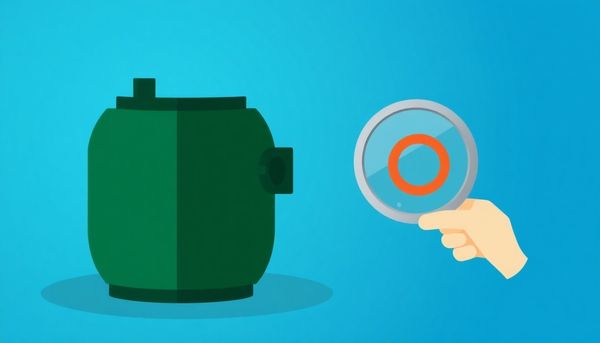
Ever noticed how tiny details can make the biggest difference? Take the humble drain plug on your pool pump, for example. Often overlooked, these small components can be the sneaky culprits allowing air to slip into your system. If you've already checked the skimmer and O-rings without finding a solution, it might be time to give those drain plugs some attention.
Once, during a particularly frustrating pool maintenance session, I discovered that a seemingly insignificant crack in the drain plug was causing those pesky air bubbles. It’s an easy fix, but it requires a keen eye. Begin by turning off the pump and locating the drain plugs at the base of the pump housing. Gently unscrew them and inspect for any signs of damage. A cracked or worn-out plug won’t seal properly, leading to air intrusion.
Replacing a faulty drain plug is straightforward. Head to your local pool supply store and grab a new one, ensuring it's the right fit for your specific pump model. Before installing, wrap the threads with pipe thread sealant tape. This simple step enhances the seal, preventing air leaks and ensuring everything runs smoothly.
By the end of my maintenance saga, tightening those new plugs felt like a victory. The result? No more bubbles! Remember, consistent inspection and replacement of drain plugs when needed can save you from future headaches and keep your pool system bubbling-free.
The telltale sign of air in your pool system often emerges as those pesky bubbles erupting from return jets. While it may seem like a minor inconvenience, air mixing with water can hinder your pool's efficiency and, if left unchecked, escalate into larger issues.
First, check the water level. An unassuming culprit, an inadequate water level can lead to the skimmer drawing in air. Ensure that the water sits comfortably at the midpoint of the skimmer opening. Over the years, I've learned that a simple hose top-up at the beginning of the season often prevents this oversight.
Next, direct your attention to the skimmer itself. Inspect the basket for cracks and ensure it's properly seated; a misaligned basket can compromise sealing. A few summers ago, I was baffled by persistent bubbles until I discovered my skimmer basket had developed an unnoticed crack. Swapping it out resolved the issue instantly.
Then, consider the weir—the skimmer door that controls water flow. This component sometimes sticks, leading to restricted flow and air seepage. A gentle nudge can verify its free movement, or you may need to clean or replace it if it's damaged.
If skimmer maintenance doesn't eliminate the issue, it's time to examine the pump. Begin with the pump lid's O-ring, a notorious troublemaker. Remove it, inspect for wear, and lubricate it even if it appears intact. This simple maintenance step can dramatically improve the seal's longevity and effectiveness.
Finally, don't neglect the unions and drain plugs. A bit of plumber's tape on the threads can ensure a snug fit, keeping air out of the system. Monitoring these elements regularly helps maintain a bubble-free pool.
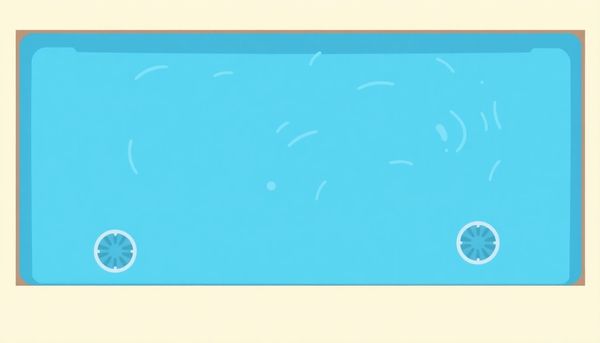
This article provided insights into maintaining your pool. Start your pool care journey today!
Want to become a pool maintenance expert? Our free Pool School course covers everything you need to know about pool care. From basic maintenance to advanced troubleshooting, you'll learn how to:
Join over 10,000 pool owners who have already transformed their pool care routine. Get started with our free Pool School course today!